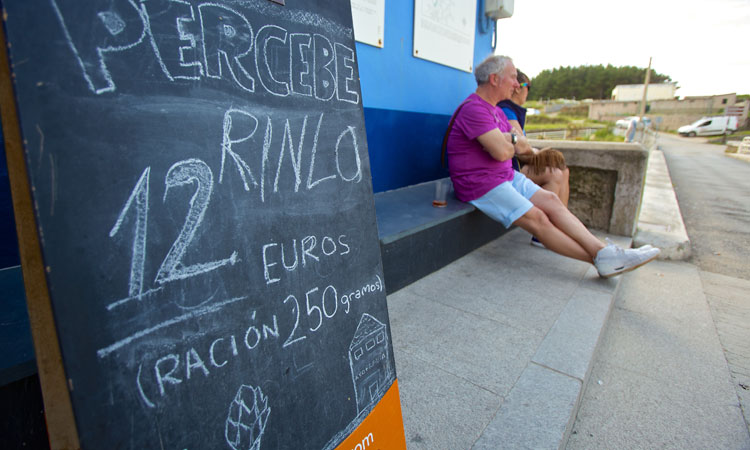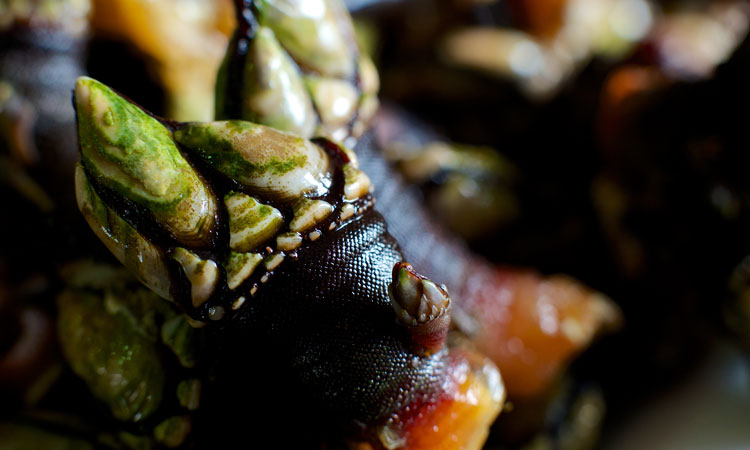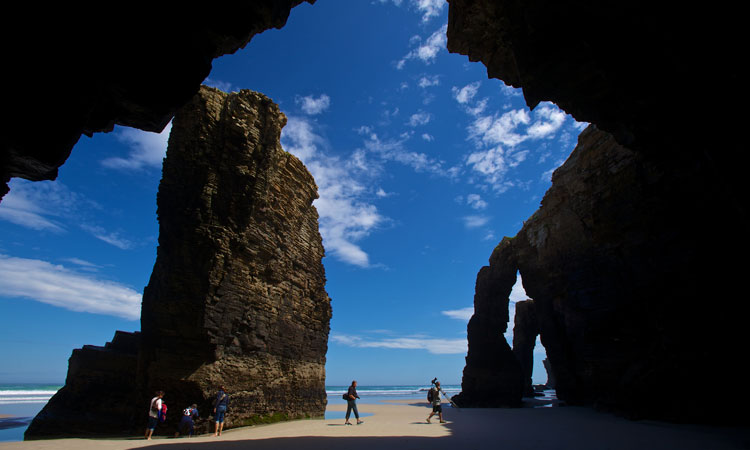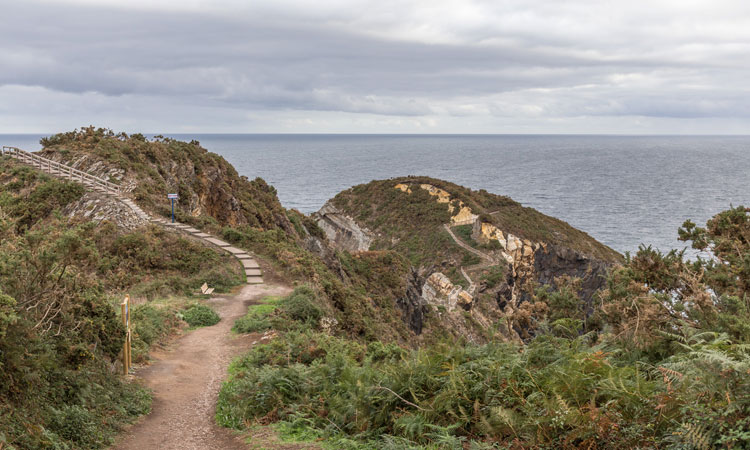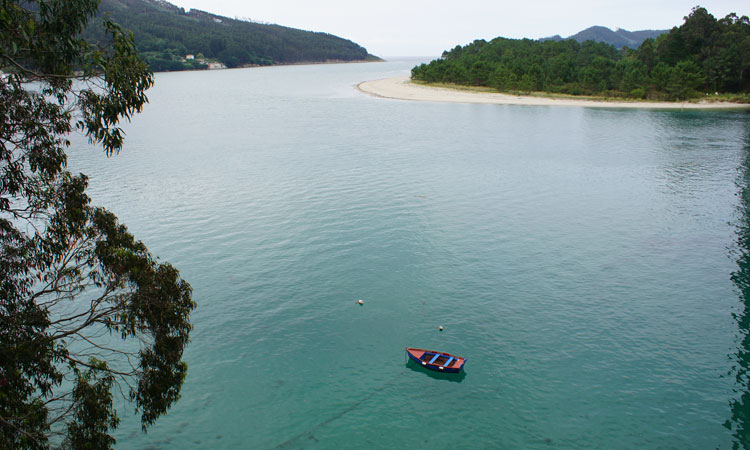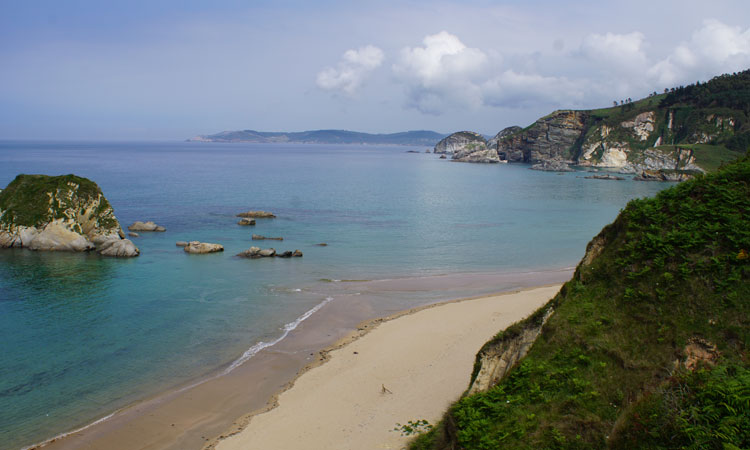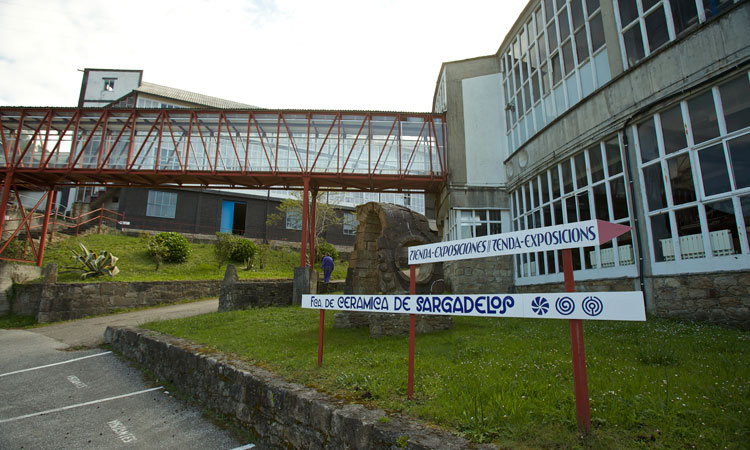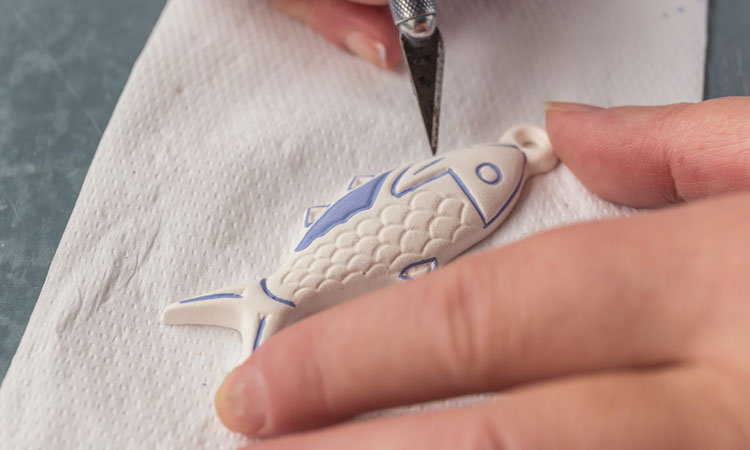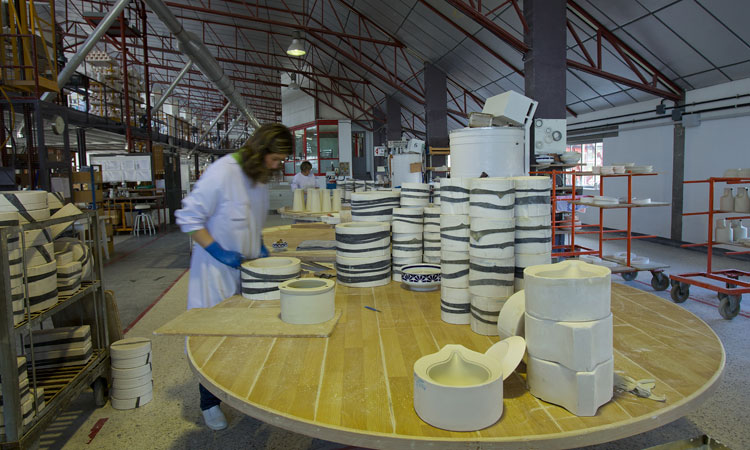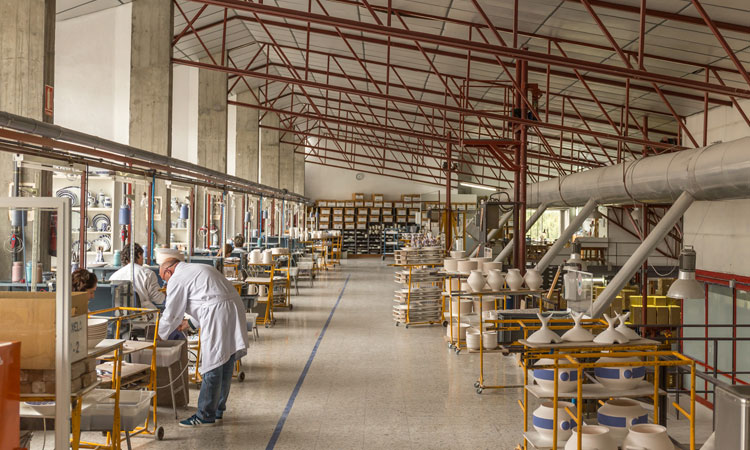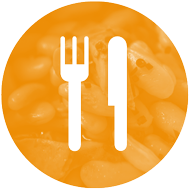Travel the A Mariña coast of Lugo going from port to port and savouring our most representative seafood and shellfish such as sea urchins, rock octopus or the ‘chícaros’ (cockles).
Recommended season: Summer / all year (several festivals)
Time: 5 days
We take you through:
- O Vicedo
- Xove
- Cervo
- Foz
- Barreiros
- Ribadeo
Did you know that?…
Ribadeo is the first stop of the FEVE train in Galicia, which passes through all the localities that this Seafood Route crosses. This is a sustainable means of transport to get to know the territory!
Stops
O Vicedo Port, next to the estuary of the same name and located in the municipality of the famous viewpoint of O Fuciño do Porco, stands out for its seafood tradition. As a curiosity, we tell you that there are 3 mini-breeding farms for clams, cockles and sea urchin dependent on the Marine Cultivation Centre of Ribadeo (Xunta de Galicia).
In May, during the Gastronomic Days for the Oyster, local restaurants will offer you exquisite preparations of this estuary bivalve to publicise and promote its consumption.
The second recommended stop of this route is a traditional canning factory where octopus and northern albacore from Burela is prepared.
In the second half of July (the date depends on the tides), Xove celebrates the Festival of the Goose Barnacle where there is no lack of charanga music and children’s activities.
Before this, during Easter Week, there is another important date. Holy Thursday is the Festival of the Rock Octopus, the name given to the species that is caught in this stretch of coast. This is a high quality cephalopod with a darker colour than the common one, with longer tentacles and a smaller head.
Make the most of this and go to Morás cape and Punta Roncadoira lighthouse. It is a wild place despite not standing out due to the verticality of its cliffs. The lighthouse’s platform, with cylindrical tower, serves as a lookout on the horizon of the Cantabrian Sea, the Viveiro estuary, the islands of Os Farallóns, of Sarón or even Coelleira Island (west). Binoculars in hand, there you will see one of the six lighthouse on the A Mariña coast of Lugo and a large reserve of migratory birds (about 15,000 nests).
The abundance of sea urchins in its water makes the town council of Cervo the Galician capital of this curious seafood. It is very common on the menus of the local restaurants which, during the Festival of the Sea Urchin of San Cibrao (between February and March) are its main ambassadors preparing them in croquettes, ‘empanada’ (typical Galician pie), tortilla, natural, cooked or in a pudding.
The hotel and catering trade is also involved with the tasting of the Festival of the Mussel every Saturday of Holy Week while it is enlivened with the performances from folk groups of the area.
With a full stomach, a mandatory stop in Cervo is the Real Fábrica de Sargadelos, Galician historic ceramic fabric. Besides the exhibition, the gallery or the Paseo de los Enamorados, it is worth visiting on weekdays (mornings) to follow the signposted route through the factory and see the workers doing their jobs with ease, giving form to these famous white pieces with their characteristic cobalt blue, green or red colours.
Take advantage of a stay in San Cibrao to get to know the 200 year history of the only traditional riverside carpentry of the Lugo province, and one of the 20 in Galicia; the Museum of the Sea, the first of Galicia; the old salting factories; or the Punta Atalaia lighthouse, with spectacular views. The Blue Trail around San Cibrao provides the backbone to all these places of interest.
If you’re here in August, experience two Festivities of Tourist Interest like another resident: the Maruxaina (2nd Saturday), during which a seafaring legend is depicted, and the Popular Queimada (the first Saturday after the 16th).
The Festival of the Winkle is held at the same time in May, in Foz and in Barreiros, with tapas and portions in the local restaurants and bars.
A good option to get to know the area and its heritage is to walk the Beaches Route, between the town hall of Barreiros and Arealonga Beach (Foz). The castro of Fazouro (Site of Cultural Interest, BIC) is the only excavated coastal castro village that has become a museum on the Cantabrian coast of Galicia. Look at these straight cliffs, which are not very high, called the ‘Cantabrian level’.
In January, Foz, the busiest tourist village of A Mariña welcomes the Festival of the ‘Chícharo’, the name that we give to cockles. For dinner, combine the first artisan beer of A Mariña with ‘gourmet’ burgers made from sea products.
Before arriving in Ribadeo, take the turn toward Rinlo, which is famous for its goose barnacles and creamy seafood rice. Our gastronomic calendar could not be complete without the Festival of the Goose Barnacle, between the end of July or early August (this varies due to the tides).
A few metres away from the quay, following the wooden walkway in the direction of Foz, you will find the first of the 3 curious natural shell-fish farms that there were in Rinlo. This one is from beginning of 1900 and was active for about hundred years.
From here, a 5km ‘short’ walk by the side of the Cantabrian level (1 hour walk and 10 minutes drive) will take you to another ‘must-see’: As Catedrais beach, a natural monument of great natural beauty. (Please remember that in summer and Holy Week you will need to book the visit.)
A 10-minute drive from Rinlo is the Ribadeo port. The Porcillán quay is the main entry for goods from the Galician north west. A route by the estuary will reveal arts and beaches for shellfish collecting and you can even experience in situ a day with the shellfish gatherers, visit clam farms, tide mills or an old seaweed factory.





